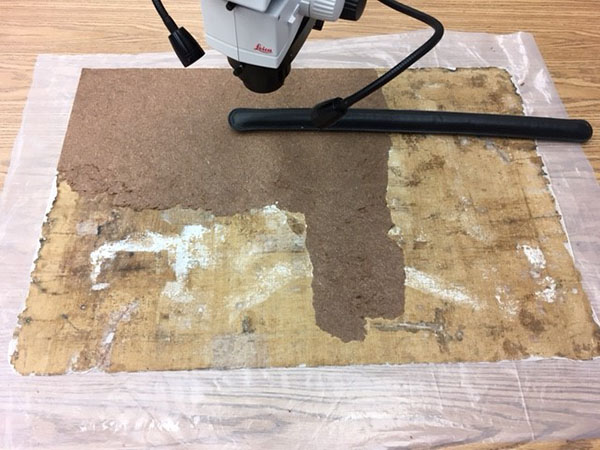- Events & Programs Home
- Calendar
- Accessibility
- Adults
-
Families & Teens
- Families & Teens Home
- 10x10 Teen Art Expo
- Art on the Rise
- Art Together: Art Making for Families with Children Ages 3–5
- Babies Sing with May Festival Minis
- Boy Scouts / Girl Scouts
- CAM Kids Day
- Family Storytime and Gallery Walk
- Family Studio: Art Making for Families with Children Ages 6–12
- Games in the Galleries
- Members-Only Baby Tours
- Public Baby Tours
- REC Reads
- Rosenthal Education Center (REC)
- Saturday Morning Art Class
- See Play Learn Kits
- Summer Camp
- Teachers
- Community Outreach
- Fundraisers
- Plan Your Own Event

- Events & Programs Home
- Calendar
- Accessibility
- Adults
-
Families & Teens
- Families & Teens Home
- 10x10 Teen Art Expo
- Art on the Rise
- Art Together: Art Making for Families with Children Ages 3–5
- Babies Sing with May Festival Minis
- Boy Scouts / Girl Scouts
- CAM Kids Day
- Family Storytime and Gallery Walk
- Family Studio: Art Making for Families with Children Ages 6–12
- Games in the Galleries
- Members-Only Baby Tours
- Public Baby Tours
- REC Reads
- Rosenthal Education Center (REC)
- Saturday Morning Art Class
- See Play Learn Kits
- Summer Camp
- Teachers
- Community Outreach
- Fundraisers
- Plan Your Own Event
Blog: CAM Uncovered
Blog: CAM Uncovered
- Home
- Plan Your Visit
- Art
-
Events & Programs
- Events & Programs Home
- Calendar
- Accessibility
- Adults
-
Families & Teens
- Families & Teens Home
- 10x10 Teen Art Expo
- Art on the Rise
- Art Together: Art Making for Families with Children Ages 3–5
- Babies Sing with May Festival Minis
- Boy Scouts / Girl Scouts
- CAM Kids Day
- Family Storytime and Gallery Walk
- Family Studio: Art Making for Families with Children Ages 6–12
- Games in the Galleries
- Members-Only Baby Tours
- Public Baby Tours
- REC Reads
- Rosenthal Education Center (REC)
- Saturday Morning Art Class
- See Play Learn Kits
- Summer Camp
- Teachers
- Community Outreach
- Fundraisers
- Plan Your Own Event
- Give & Join
- About
- Tickets
- Calendar
- Exhibitions
- Collections
- Blog
- Shop
Behind the Scenes in Conservation: Nineteenth Century American Landscape
by Conservation
3/26/2020
paintings conservation , behind the scenes , american art , landscapes

Our paintings conservator has worked on some challenging projects! This painting is a nineteenth century American landscape that has suffered multiple tears in the course of its lifetime, probably due to the poor quality of the canvas. (It’s not in the CAM collection.) The canvas is thin and woven of fine fibers, but the weave itself is very irregular, with a loose open weave in some areas, and tighter, more closely packed threads in others. This, along with a tendency toward brittleness, has meant that the canvas supporting the paint layers is very prone to tears.
The back shows at least four, and possibly five, separate applications of different adhesives and patches. The most recent and maybe most drastic intervention is shown here. Someone stripped off all the patches on the back and glued the canvas to 1/8” Masonite™ board using a white craft glue. The glue was not spread evenly, and water in the aqueous glue caused the canvas to swell unevenly as well, so there were large loose blisters of canvas throughout.
Both the Masonite™ and the glue are much stronger than the canvas, so unfortunately there was only way to remove the painting safely. A layer of tissue paper was glued to the face of the painting using a conservation adhesive for protection, and the painting placed face down on a sheet of plastic. The Masonite™ was then carefully shaved away in layers, using scalpels and knives. As shown here, much of this work was done under the microscope in order to ensure the canvas was not damaged any further. While tedious, the removal always needed to be performed with painstaking attention. (This is one of those conservation procedures that calls on every bit of patience a conservator can muster.)
Once the board and remnants of adhesives are removed from the back of the painting, it will be lined to a new canvas support and stretched on a stretcher, a presentation much more in keeping with its original oil-on-canvas structure.

Cincinnati, OH 45202
Toll Free: 1 (877) 472-4226
Museum Hours
Museum Shop
Terrace Café
Library
Cincinnati Art Museum is supported by the tens of thousands of people who give generously to the annual ArtsWave Campaign, the region's primary source for arts funding.

Free general admission to the Cincinnati Art Museum is made possible by a gift from the Rosenthal Family Foundation. Exhibition pricing may vary. Parking at the Cincinnati Art Museum is free.
Generous support for our extended Thursday hours is provided by Art Bridges Foundation’s Access for All program.

General operating support provided by:



